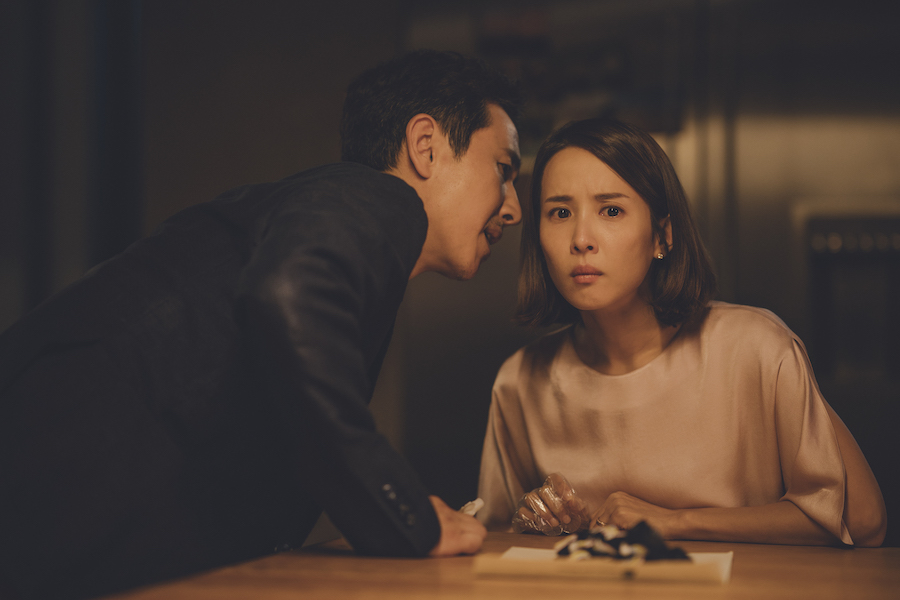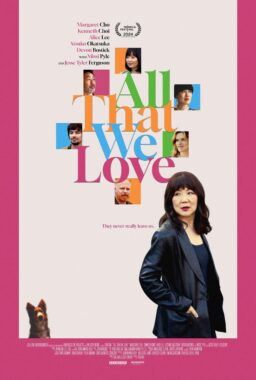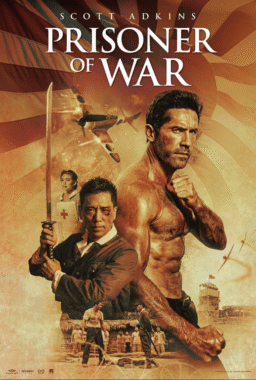“I love this weather. A London or a Belfast kind of weather, I just love it,” writer/director Bong Joon-ho tells me on a rainy New York afternoon last week. “The strong California sunshine makes me very nervous and anxious. I don’t know why.” Well, who cares about the odd wind and the annoying, muddy puddles outside anymore? Truthfully, the prospect of talking to him about “Parasite,” one of the year’s biggest cinematic sensations, is slightly overwhelming to me; so to be sitting near a wet Midtown window with a gray and gloomy view the filmmaker just admitted to adore and find relaxing, is suddenly reassuring.
A darling of critics and the winner of Cannes’ prestigious Palme d’Or prize, “Parasite” is already a box office stunner in its limited, soon-expanding release—it sold out every single one of its IFC Center screenings over the weekend, becoming an all-time opening weekend record-breaker for the indie theater. There is a must-see status around the film, proving that the unanimous praise and interest for it out of Telluride, Toronto and the recently concluded New York Film Festivals was no coincidence. And even bigger things might be ahead for the adventurous genre film submitted to the Academy Awards as South Korea’s official selection; victories that might reach beyond a “Best International Film” award at the Oscars. (South Korea has never been nominated in the recently-rebranded category formerly called “Best Foreign Language Film,” so even a nomination is bound to make AMPAS history.)
The director’s finest film to date, “Parasite” thematically aligns with Bong’s previous work like “Okja,” “Snowpiercer” and “Mother” that explores issues around social justice, class inequalities and capitalistic greed, with the artistic specificity and genre polish we came to expect from the filmmaker. Blending elements of satirical comedies, neorealist dramas, high-wired thrillers and unnerving horror, Bong’s latest tells the story of two families—actually, three (without giving away spoilers)—worlds apart, yet merging under one roof eventually. We first meet the Kims—a tight-knit family of four, barely making ends meet with odds jobs here and there, living in crammed quarters of a grimy corner of Seoul. Gifted scammers, the quartet speedily works its way into full-time jobs at the Park house; an idyllic architectural wonder, a rich, contemporary fortress with secrets, nested in a very different part of town. And naturally, all hell is bound to break loose. As Bong goes deeper into his examination of economic disparity and the blind, condescending entitlement of the privileged class, “Parasite” goes from funny, to unsettling, to deeply heartbreaking in segments orchestrated with the precision of a stage choreographer.
Below is my brief chat with director Bong, on the themes and crafts of “Parasite.”

“Parasite” is very specific about its sense of space. All your movies have that exactness about the place they are set in. But “Parasite” would not have worked in any other type of house. So how did you conceive the idea of this castle-like place, with multiple layers and multiple nooks and crannies?
You know, the rich house in this film is not like the mansions you see in Hollywood films, like Tim Burton’s “Batman”; Michael Keaton’s home in that film. It’s not as big, but around 60% of the story happens there. So it was very important that it felt like its own universe. And of course if you go into further detail of the house, you discover many secrets. So we really tried to construct it as this big universe. And how the characters move within that space there is also very important. Their pathways, their movements and all the [camera] angles. So even from when we were designing the space, our priority was how people would be moving and we designed it around that movement. So that movement, the blocking, is very essential to me. Maybe if some real architects in the real world watched the movie, they might find it a little strange; like, why no house has that kind of structure. Of course, you know, in the frame, it’s very beautiful. But from an objective perspective of an architect, the structure might feel a little unconventional.
Your sets were completely designed and built from zero, then?
So the rich house, the poor house and the neighborhoods surrounding the poor house were all designed and built; we [sketched] and built all of it. None of the locations actually existed. We built the first floor of the rich house on an outdoor lot that’s used for film sets. We created the garden and we planted the trees and that was our main stage. The second floor of that house and the basement, we built in a separate sound stage.
Knowing none of it existed before; some of the intentional symmetry between the two houses makes even more sense. This is especially the case with the rectangular windows of both houses, with very different views.
Yeah, yeah. Exactly. The rich house carries a very artificial sense of beauty and artificial sense of cleanliness. It’s very orderly, the backyard and the entire house. And that giant glass wall [window] basically was built in this CinemaScope ratio. We designed it like that on purpose, so that when people are sitting in the sofa and drinking whiskey, it almost feels like they’re watching a film screen. And for the poor house, the window is longer and it also gives a sense that this family has no privacy, that anyone outside can look in and sort of infiltrate their home. There is always that sense of … maybe a drop of urine could just drop on their window. And so they’re always vulnerable to the outside world.

You have said in other places that you don’t do rehearsals with your actors. But on the other hand, all your films are meticulously choreographed, with complex character movements you have mentioned moments ago. So how do you establish that fluidity within your cast?
That kind of very technical movements, I do it. But nothing on an emotional level, all just very mechanical, If there is some complicated camera movement or Steadicam kind of a thing, of course I do. But it’s all very technical around checking the positions. So when I say I don’t do rehearsals, I mean I don’t set up the entire emotion of the scene in terms of performance. With the actual physical aspect of filming, with complicated shots, definitely. When actors act together for the first time, it can be quite awkward because they don’t know, they haven’t figured out the exact chemistry yet. They haven’t calculated how they will all fit together. And so sometimes it feels a little clumsy, little hectic and confusing. But that’s the kind of feeling that I like. I just shoot it and sometimes it feels even more realistic and more human. Because I sometimes discover those interesting elements on the first take, I always hope that I will be able to catch it. So it’s not that I don’t do rehearsals, I just shoot the rehearsals.
Thematically, “Parasite” aligns with your previous work, like “Snowpiercer” and even “Okja.” You explore issues around class, the clash of “upstairs and downstairs,” and capitalistic systems. You’re conscious of these dynamics in Korean society and elsewhere.
I may be more sensitive, you know, as an artist, but I think all of us, we feel class 24 hours. We just try hard to ignore it because it makes us uncomfortable. So for example, when we’re introduced to someone at a party and we shake hands, unconsciously we think about what clothes they are wearing. Are they holding an expensive bag? Are they using an old iPhone or a new one with those three lenses? So we feel around us all the time and I think, you know, we have this particular sense where we can determine whether someone is middle class, upper-middle or lower class in just a few seconds. It’s just that we never talk about it out in the open. Even when we’re, you know, hugging someone, we inevitably smell them. But it’s just that we never talk about it because it’s rude. It’s not as if I’m trying to explore class as a social economic issue with a giant flag I’m waving. But I think this film is talking about something that we all feel and we all are aware of, but we just never talk about. That’s what it is showing on the big screen.
Though it seems this is a topic that’s also top of mind for other South Korean filmmakers. Last year, there was Lee Chang-dong’s “Burning.” I found it interesting that food is used as a subtle signifier of class in both movies. In “Burning,” there is the “cooking pasta while listening to music” reference. In “Parasite,” an expensive cut of sirloin steak gets added to a simple noodle dish, translated as ram-don in the film.
[Laughs] You know, in the English subtitle, it’s named ram-don, like a mixture of Ramen and Udon. So it was impossible to translate. But the original word we have is jjapaguri, which is a combination of two brand names. They’re both instant noodles, one black bean, one spicy seafood. It’s something that lower and middle class people eat. It’s very cheap, just a cheap instant noodle dish, something that everyday people just invented. And that dish is very popular with children. It’s something that kids love—and even rich kids are just kids in the end. But the mom, she just adds the rich topping on it with the sirloin. No one really eats it that way. But after the film was released, people had posted recipes and were talking about adding sirloin to a noodle dish.

I should look those up. And speaking of recipes, there’s now a new beer named after you.
[Laughs] Bong Joon-HOP! People at the Austin Fantastic Fest, they’re very adorable people. And also in this film, you see the protagonist family drinking beer a lot. At first, we see them drinking after they folded the pizza boxes [to make money], they’re drinking the cheapest Korean beer we have. And the second time, when it’s after they’ve infiltrated the rich family and they’re all employed. [In that scene], they’re actually drinking a very expensive beer. So that’s something Korean audiences caught.
You’re going to be in the thick of the awards season in the upcoming months. I am wondering what you make of this circuit and the road ahead till the Oscars.
This is my first time participating in such an extensive campaign. So it all feels very new and I find it very fun as well. But with the Oscars, you know, there’s so many people who have to vote. The campaign is also very long. With Cannes and some of the domestic Korean awards, it’s usually just around a dozen jury members who choose the films. But this is a much larger system. So physically, it’s been a little tiring, but I think, you know, another level of meaning is attached to this.












